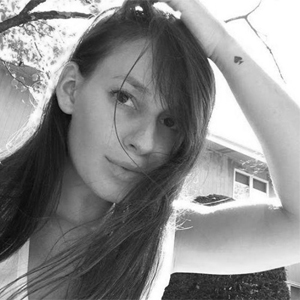- Technology
- SEE MORE
- classical
- general
- talk
- News
- Family
- Bürgerfunk
- pop
- Islam
- soul
- jazz
- Comedy
- humor
- wissenschaft
- opera
- baroque
- gesellschaft
- theater
- Local
- alternative
- electro
- rock
- rap
- lifestyle
- Music
- como
- RNE
- ballads
- greek
- Buddhism
- deportes
- christian
- piano
- djs
- Dance
- dutch
- flamenco
- social
- hope
- christian rock
- academia
- afrique
- Business
- musique
- ελληνική-μουσική
- religion
- World radio
- Zarzuela
- travel
- World
- NFL
- media
- Art
- public
- Sports
- Gospel
- st.
- baptist
- Leisure
- Kids & Family
- musical
- club
- Culture
- Health & Fitness
- True Crime
- Fiction
- children
- Society & Culture
- TV & Film
- gold
- kunst
- música
- gay
- Natural
- a
- francais
- bach
- economics
- kultur
- evangelical
- tech
- Opinion
- Government
- gaming
- College
- technik
- History
- Jesus
- Health
- movies
- radio
- services
- Church
- podcast
- Education
- international
- Transportation
- Other
- kids
- podcasts
- philadelphia
- Noticias
- love
- sport
- Salud
- film
- and
- 4chan
- Disco
- Stories
- fashion
- Arts
- interviews
- hardstyle
- entertainment
- humour
- medieval
- literature
- alma
- Cultura
- video
- TV
- Science
- en
HR in XR, with BrainXchanges Emily Friedman

As the lead\nwriter and head of content at BrainXchange, Emily Friedman has had\nample chances to explore a lot of XR-related topics. She lets Alan\npick her brain about a few of them, from getting millennials\ninterested in trades, to democratizing knowledge, and how humanity\nwill enter The Cloud.\n\n\n\n\n\n\n\nAlan: Welcome to the XR for\nBusiness Podcast with your host, Alan Smithson. Today\u2019s guest is\nEmily Friedman from BrainXchange and Augmented World Expo. Emily\nFriedman is a New York based enterprise immersive, wearable and\nemerging technology advocate, journalist and facilitator. She\u2019s Head\nof Content and the lead writer at BrainXchange, lead journalist and\nsenior editor at Enterprisewear Blog, and head of marketing and\ncommunications for Augmented World Expo USA and AWE EU. To learn more\nabout BrainXchange, you can visit brainxchange.com. And if you wanna\nlearn more about AWE or Augmented World Expo, you can visit\nawexr.com. \n\n\n\n\nWelcome to the show, Emily.\n\n\n\nEmily: Thank you for having me.\n\n\n\nAlan: Oh, it\u2019s my absolute\npleasure. I\u2019ve been really looking forward to this conversation,\nbecause you are writing everyday \u2013 or, not everyday, but what, a\ncouple times a week? \u2014 on the enterprise wearables world. So maybe\njust kind of give us an overview of what is BrainXchange and AWE.\nLet\u2019s start with that.\n\n\n\nEmily: Ok, I wish I were\nproductive enough to write multiple articles a week. But there\u2019s a\nlot going on. BrainXchange, we started out as a boutique events\ncompany, and we just happened to enter augmented reality at the right\ntime. It was 2015, right after Google Glass, quote/unquote failed.\nAnd there were all these headlines, \u201cGlasshole\u201d articles. But if\nyou read between the lines, it was clear that smartglasses weren\u2019t a\nfailure, and that enterprises were actually finding good use cases\nfor it. So today we provide events, content, and other services all\nrelated to facilitating enterprise XR.\n\n\n\nAlan: You know, I\u2019ve been at AWE\na couple of times now. I lead the startup track this year. It\u2019s an\nimportant conference for virtual/augmented/mixed reality and some may\nsay it is the most important conference. It\u2019s where everybody around\nthe world gathers in. And I made this comment that if the building\nhappened to collapse, basically the entire VR world would cease to\nexist, and we\u2019d have to start over again. It was an amazing\ncollection of some of the world\u2019s smartest people working in this\ntechnology and enterprise. They seem to be really driving this\ntechnology forward. What are you seeing?\n\n\n\nEmily: Well, as for AWE, I think\nit\u2019s a very important benchmarking event. Like you said, the entire\nindustry gets together at that one point. What we\u2019re seeing \u2014 and\nthe reason we gravitated towards enterprise at first \u2014 is that\nthat\u2019s where the money is. I mean, that\u2019s where the money has to be\nmade, both for end users and the AR/VR companies themselves. At the\nend of the day, we cater to the enterprises and we talk to them every\nday. We get on the phone with Fortune 500 companies, the innovation\npeople and all these different companies every day. And we listen to\ntheir pain points. AR/VR happens to offer a solution to a lot of\ntheir pain points.\n\n\n\nAlan: So what are some of the\npain points? Let\u2019s unpack that.\n\n\n\nEmily: Huge one is a shrinking\nworkforce, that creates this need to train faster, better. So as the\nworkforce ages \u2014 in manufacturing, I think the average age is like\n40 to 50 now \u2014 and retires, not only do you need to attract new\ntalent; you need to train them. As a millennial, this is actually\npretty important to me. Learning a skill today just doesn\u2019t get you\nas far as it did half a ce